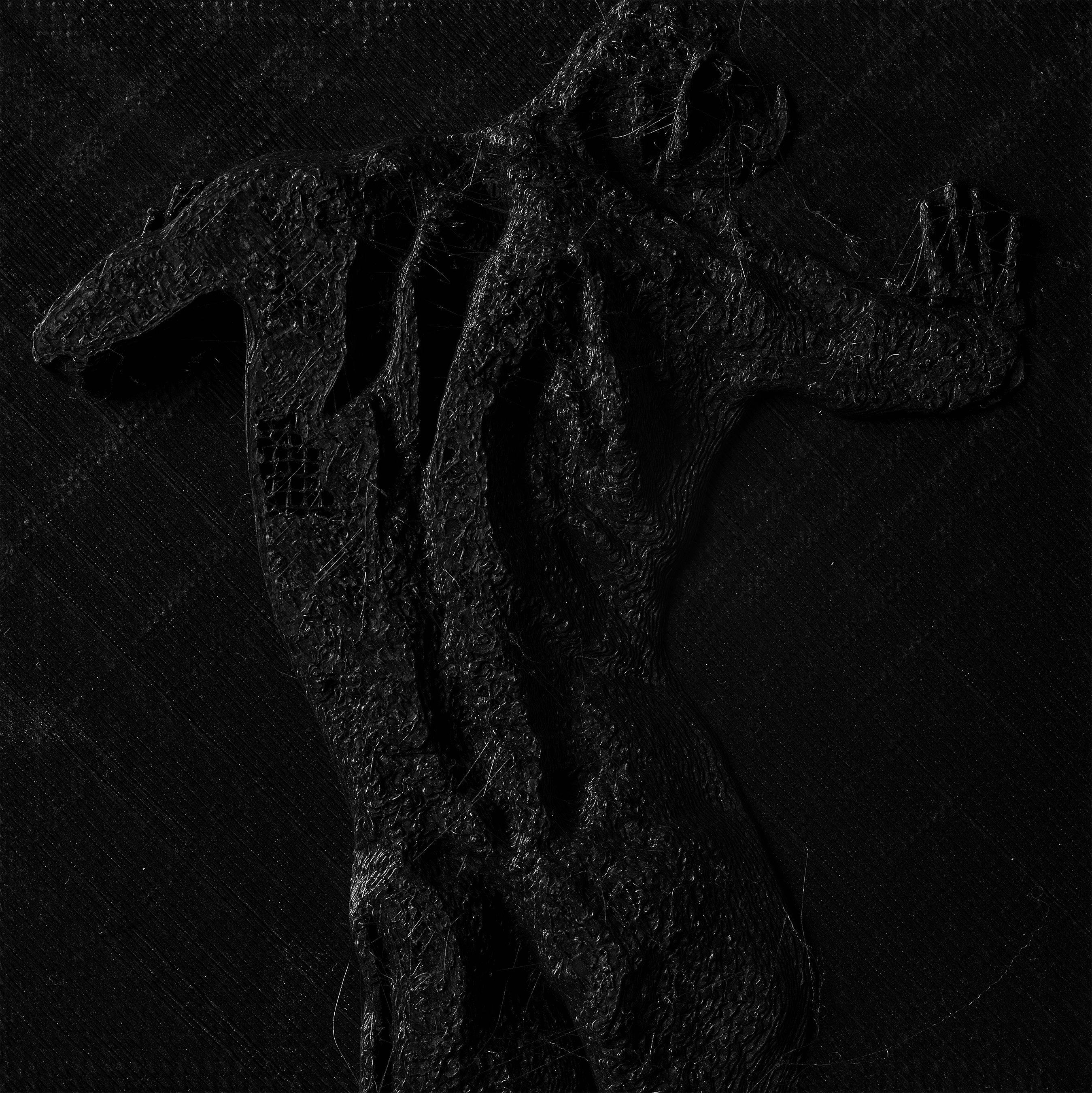

Shibboleth
Pedro Barbáchano
March 22 - May 4, 2024
Shibboleth’s departure points are the absence and negation of dissident bodies from ethnographical collections, historical documents, and museological archives. The case study presented observes The Museum of Egyptian Antiquities and Ancient Egyptian collections in major European museums. How can we surface a community that has been prosecuted for its sexual use of the body and betrayed by photography’s forensic capacity? Sentencing a group to a furtive existence removes the possibility of a political voice or social representation: of owning an image.
Through processes of material transformation and the use of plastic, these new relics simultaneously contain the traces of a violent experience and the dignity of an artistic object. Masculine nude self-portraits are presented as archaeological artifacts, as an auto ethnographical archive which is both a symptom and a response of resistance to biopolitical normalization. The transformation from stone to plastic in the process of reproduction, provide alternate forms of speech to unprovenanced artifacts from museum collections which incite suspicion about their missing background. Lastly, images of empty vitrines in the museum infer erasure and displacement which elicits the viewer to fill in the absences with the objects presented and question the reasons behind their concealment. The subject’s fragmentation in these portraits evades surveillance while their materiality is an embodied testimony of repression. Fossilized representations are what remain of images which have survived social rejection, censorship, and erasure.
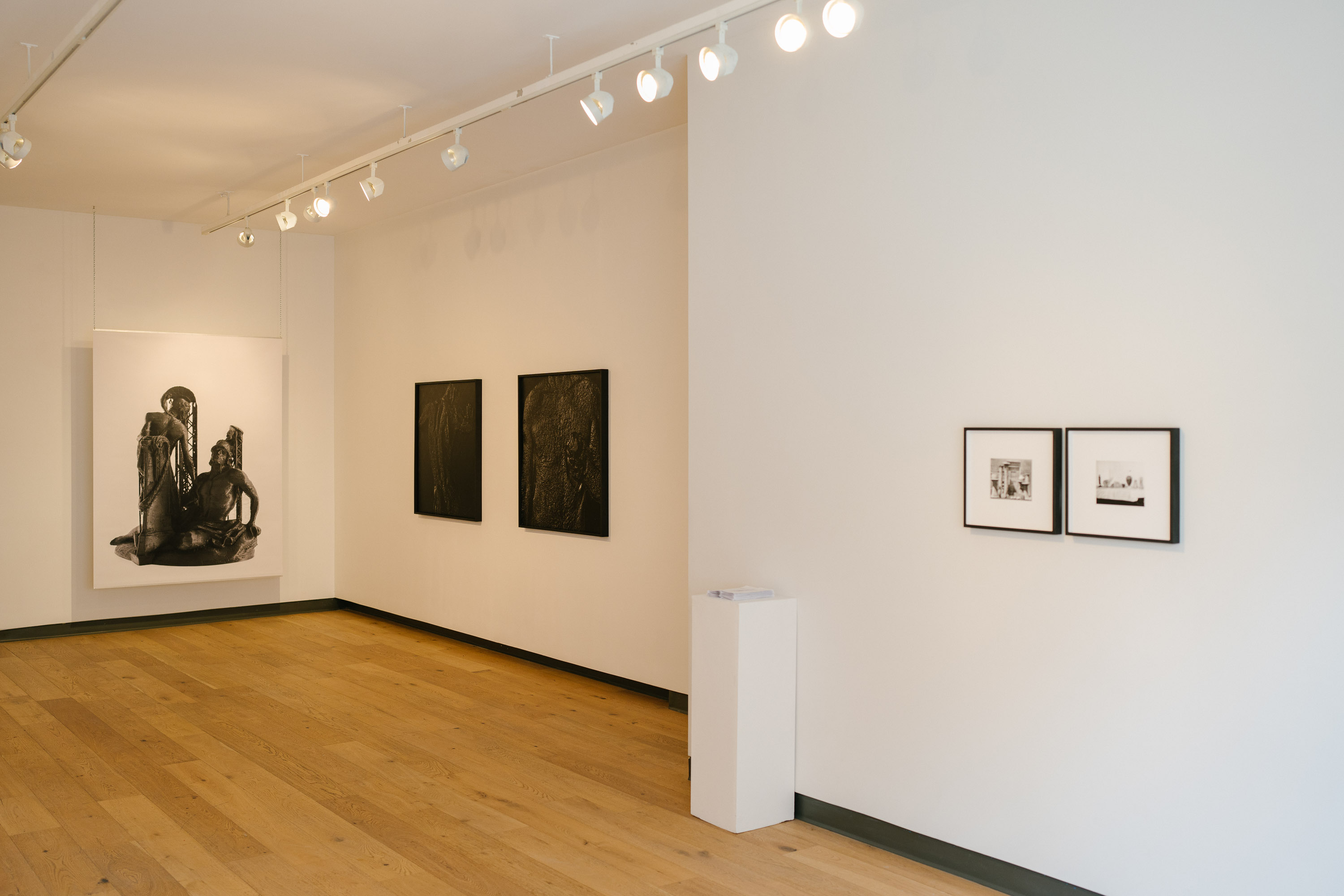
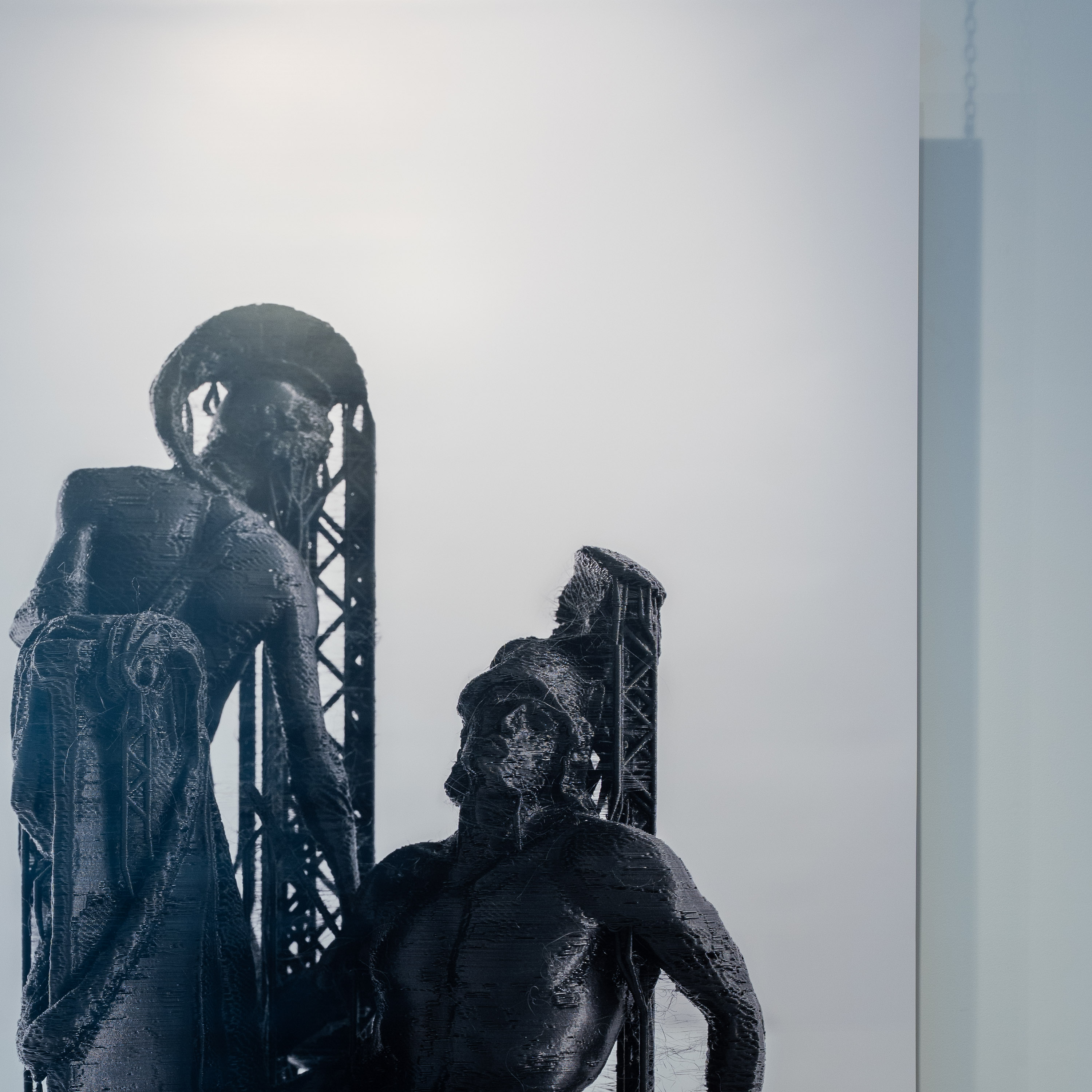
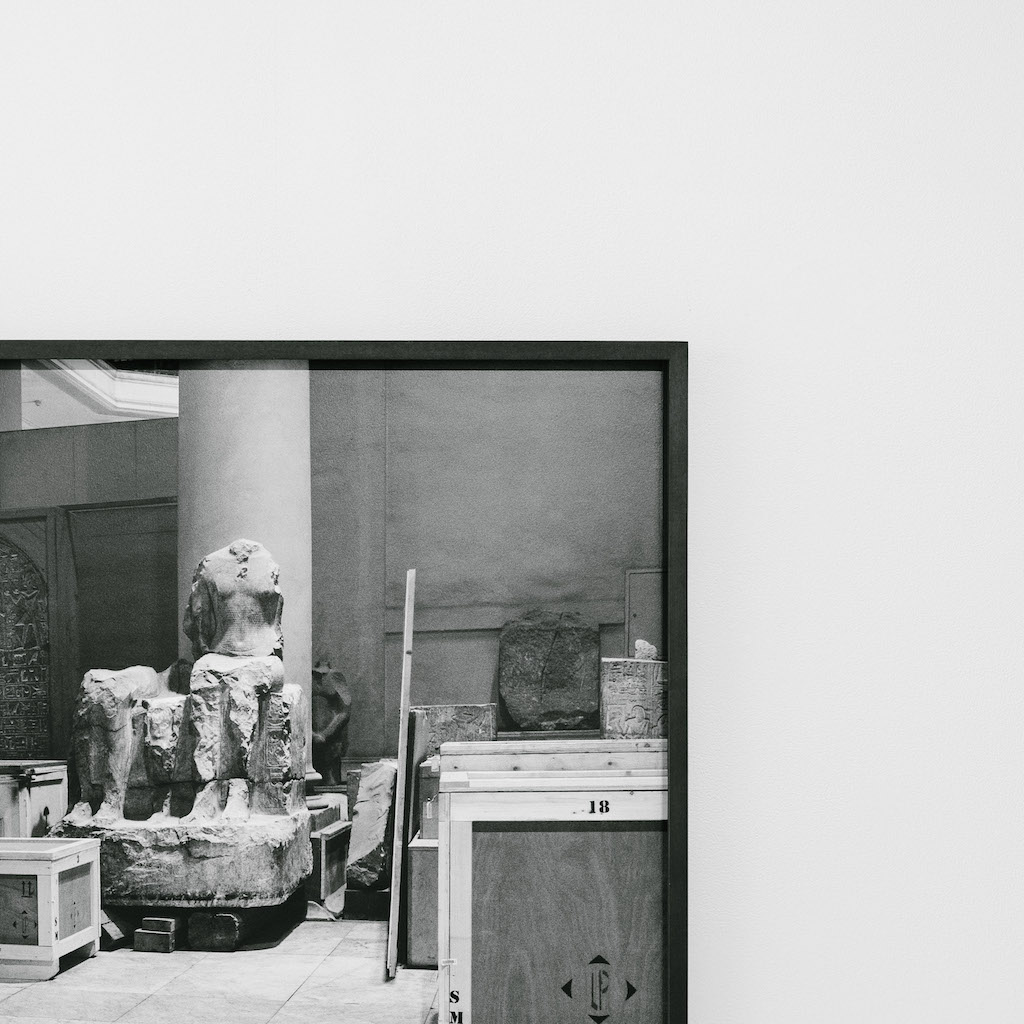
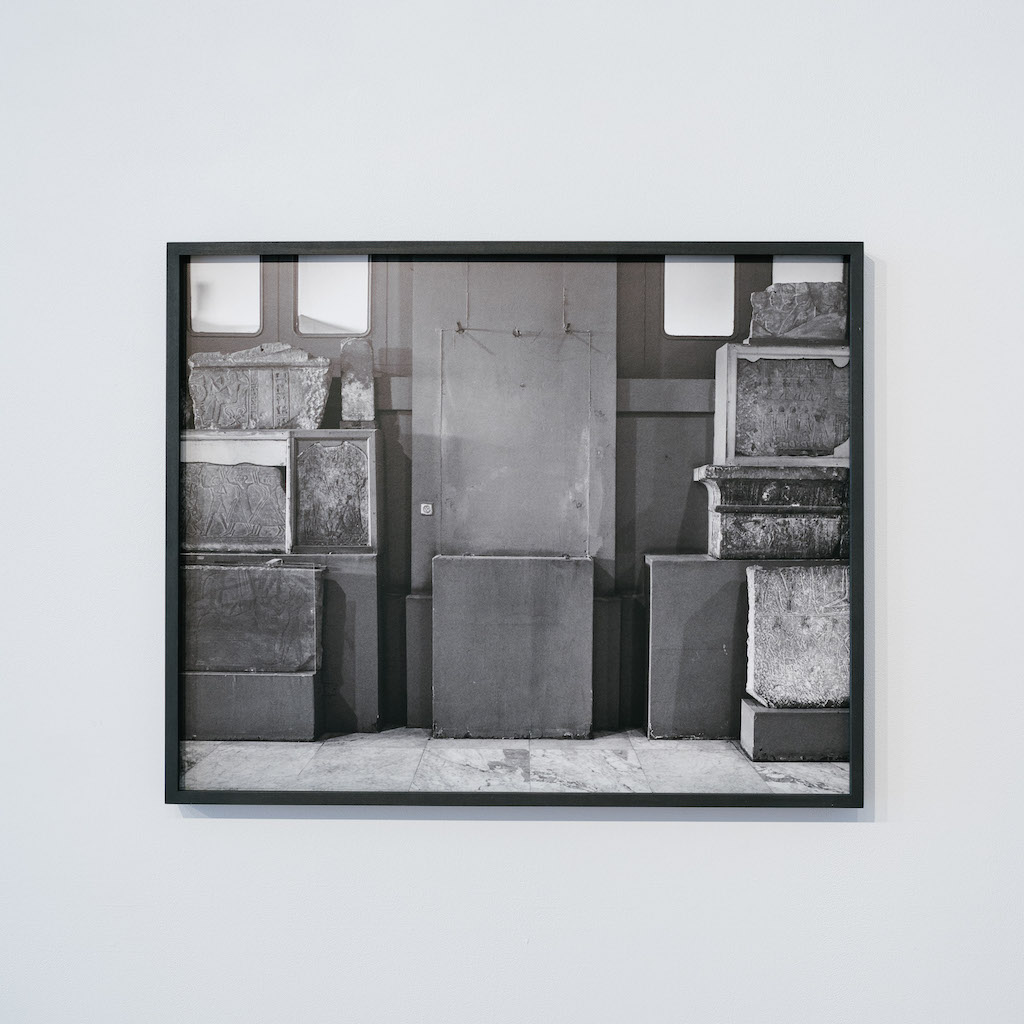
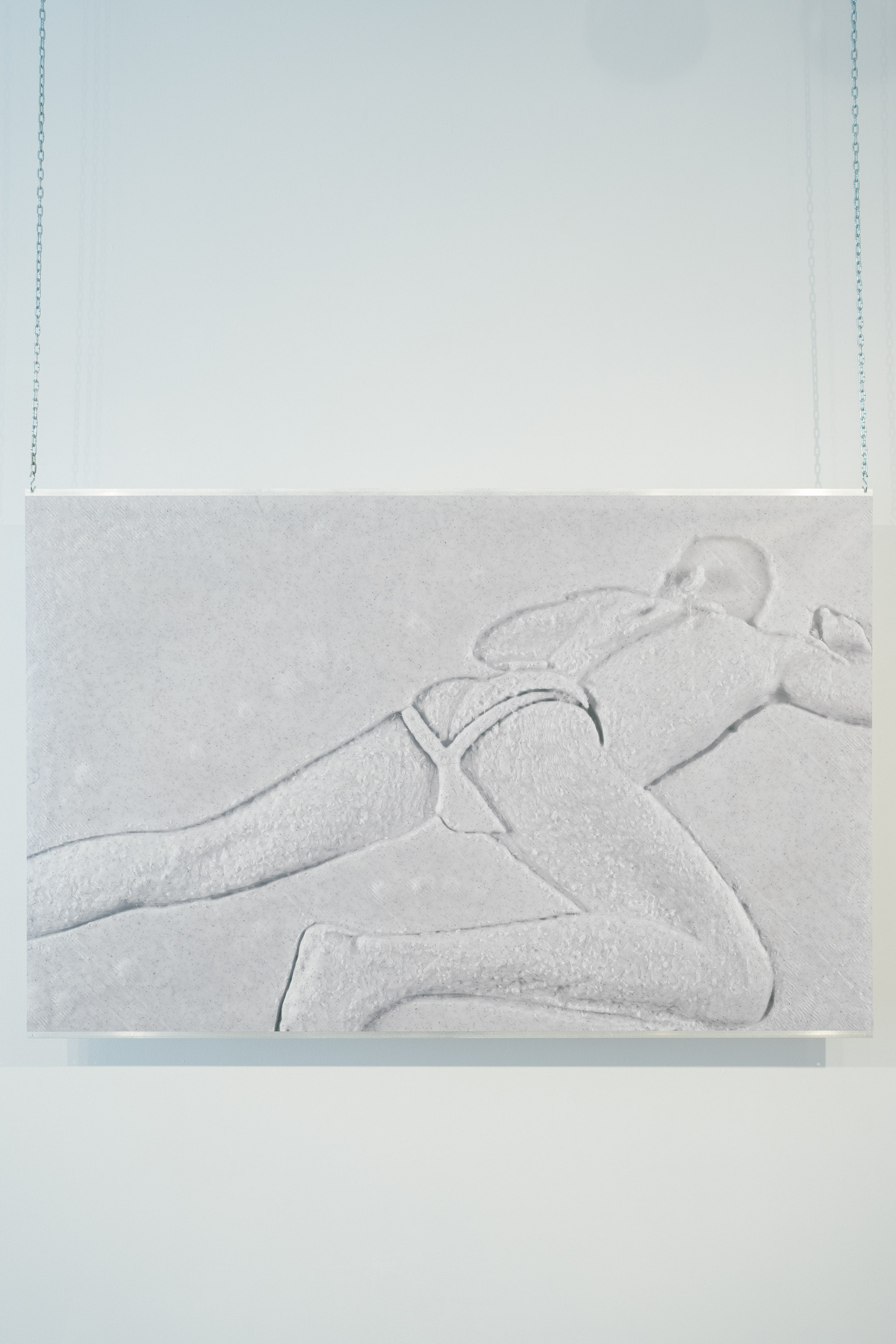



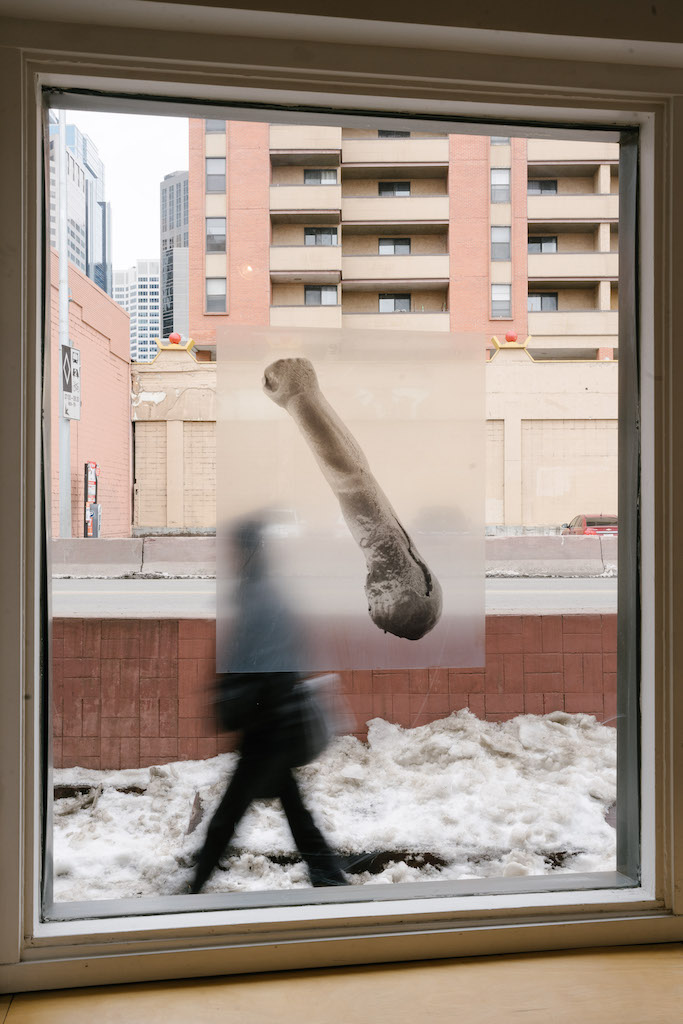
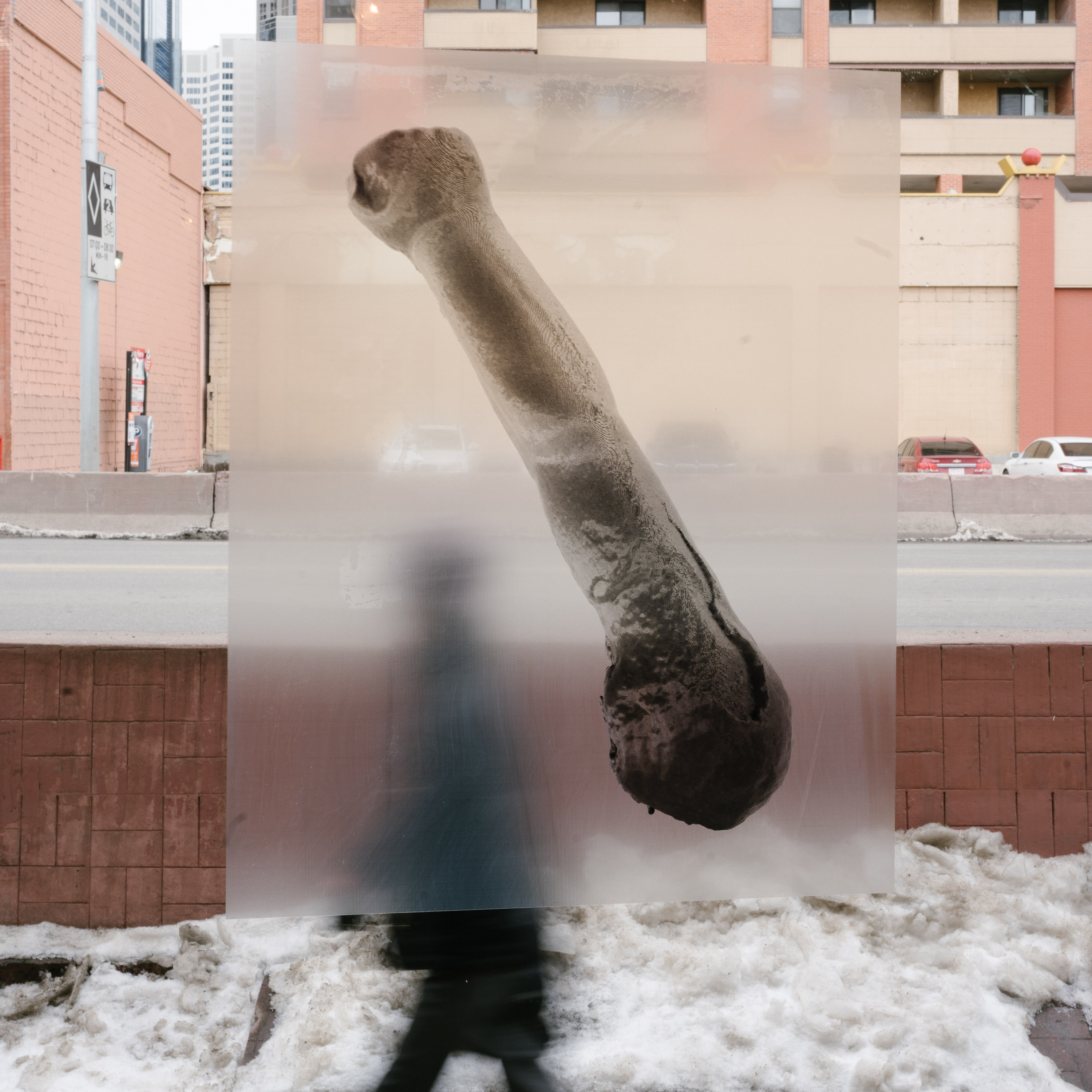

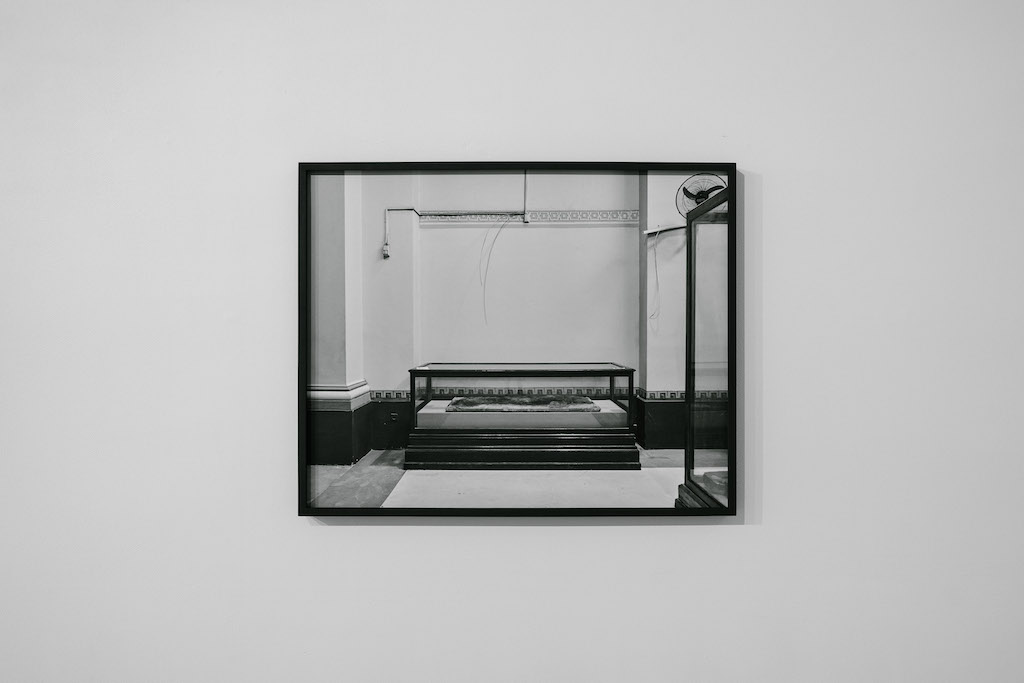

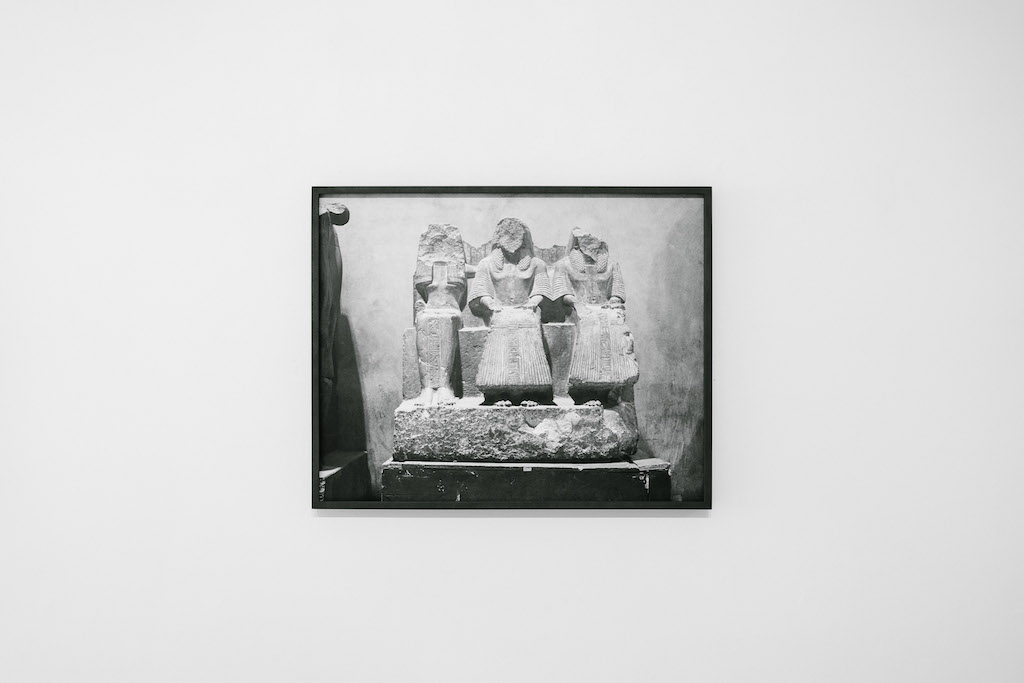
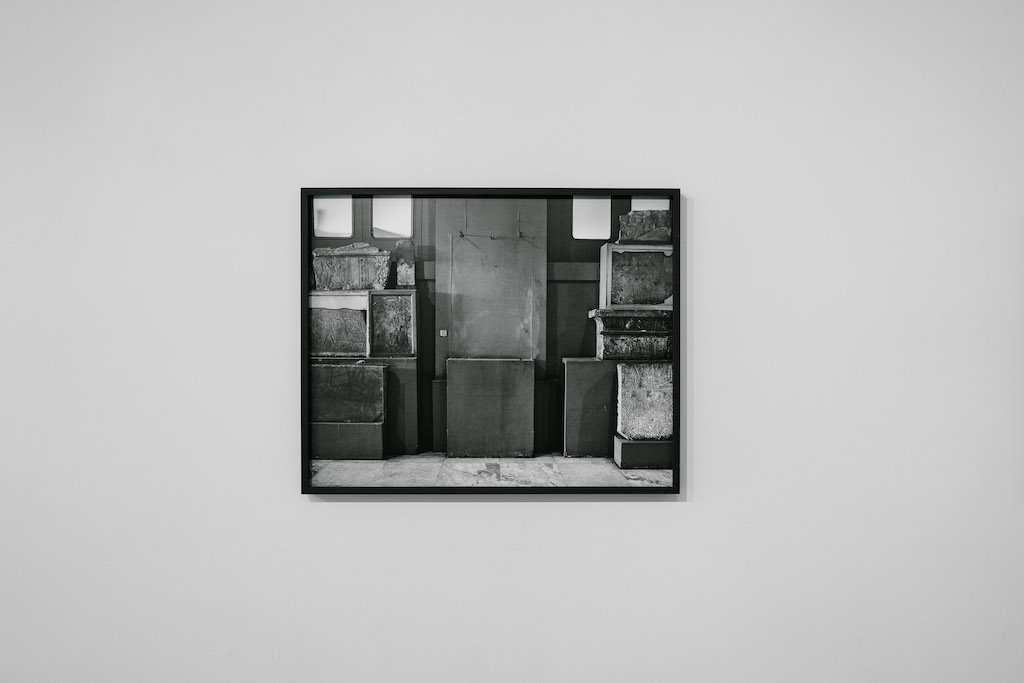

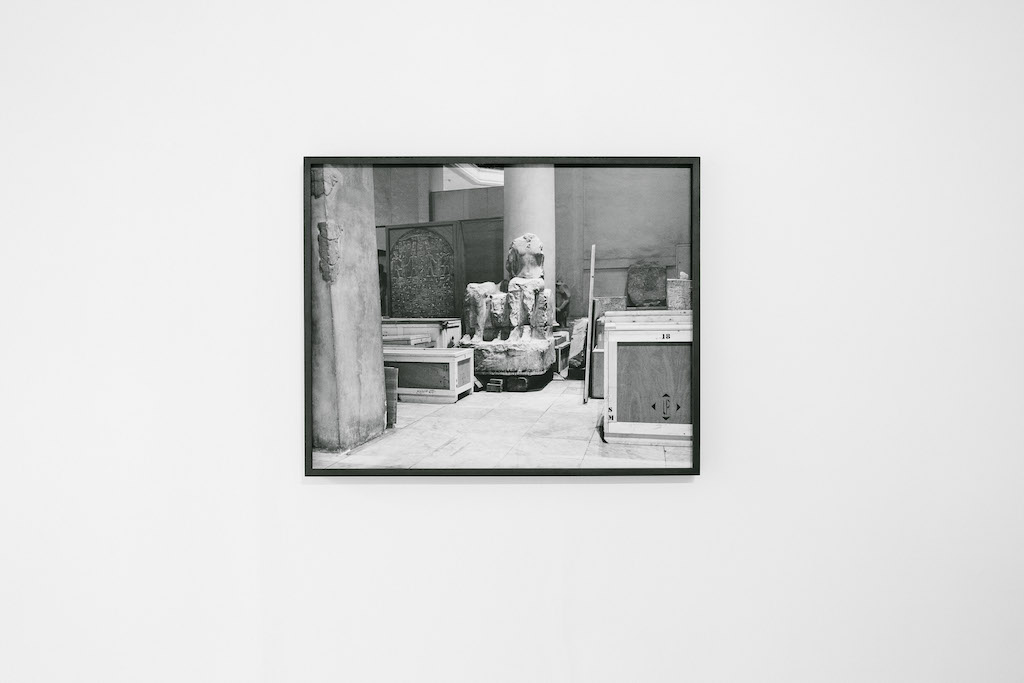
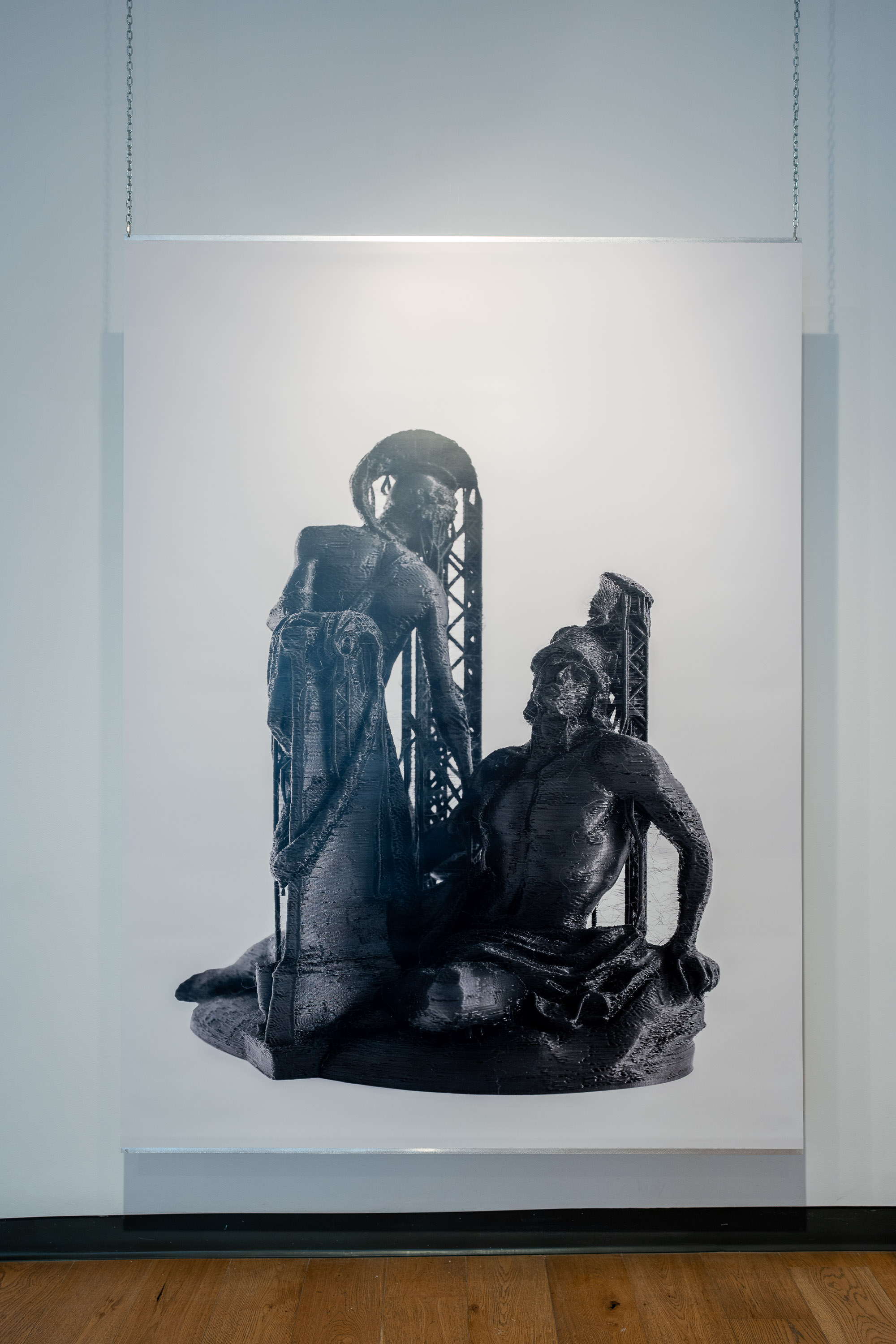

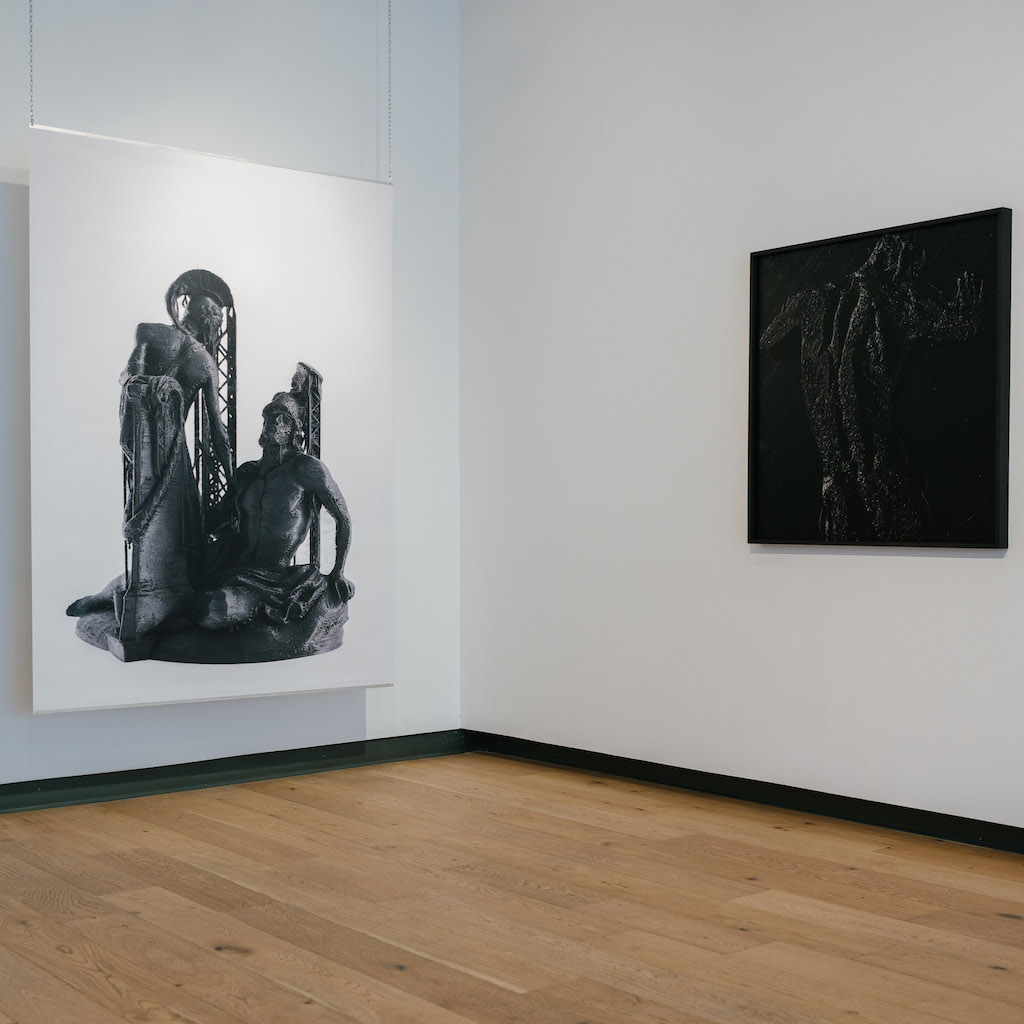
Documentation by Danny Luong
Shibboleth
Essay by Joyce JoumaaIn Arabic, the term “Tahrir” signifies liberation. However, within the complex socio-political landscape of the Arab world, certain terms and concepts often fail to realize their full potential due to prevailing contexts. Tahrir Square, ostensibly a space for the liberation of protesters from Egypt's historical dictatorship, paradoxically becomes a site of control, surveillance, and punishment. Here, the historical refers to the present moment. This present moment which started in 2010 and has not ceased to exist since. They call it spring for it is in spring when the process of burgeoning happens, allowing for the metamorphosis of the bodies, or the coming of new bodies which make up the living organisms that flourish.
In Shibboleth, Pedro Barbachano undertakes an anthropo-archaeological exploration, navigating between proximity and distance from the present moment. By drawing from both historical and contemporary methodologies, Barbachano excavates the Egyptian Museum in Cairo, situated in Tahrir Square, uncovering enigmatic archaeological artifacts that challenge established narratives. Within the context of Cairo, the museum, allegedly serving the state, becomes intertwined with the state's repression of protesters, both entities regulating and surveilling bodies within this contested space.
What neither the state nor the museum know, is that both the protesters and the sculpted bodies are witnesses. It is in this process of witnessing that the counter-revolutionary act happens. In witnessing, one identifies and consequently defines. Related to this notion of identifying through processual gazing is one of the artist’s concerns in studying queer bodies as part of a figurative panopticon. Figurative because it is incessantly extending beyond the tangible walls of the institution. In the realm of these counter-acts, processual gazing becomes an alternative for what representation is meant to fulfill. In this show, Barbachano asks: How do you build a historical narrative from evidence that is classified as criminal? Is representation as understood in its Western canon, truly at the service of queer bodies when existing in a militarized state?
His work alludes to a negation suggesting that queer thriving doesn’t pass through traditional methods of representation in this specific geospatial context. Instead, he explores the virtual realm as a space for the extraction of evidence, utilizing an array of nude selfies collected amongst his friends to create fossilized objects that are recontextualized. Taking a photograph transforms it into potential criminal evidence, with each image serving as a record that can be used against the individual depicted. In an attempt to counter-analyze evidence, this process speculates on the possible readings of these photographs as queer-coded objects whose history has been erased and to inscribe the queer body in a historical and eventually, archaeological register.
The work considers the selfie as the only possible tool for self-representation, allowing for one to self-frame themselves sexually and to exist on the virtual map of the city. In a militarized urban environment where individual profiles can be meticulously mapped, the right to visibility for queer individuals is paradoxically constrained by the omnipresent surveillance apparatus. Despite the proliferation of monitoring mechanisms inherent in the city's expanded panopticon, the right to exist freely and openly as a queer person is undermined and often denied. By reinterpreting these photographic gestures, the artist introduces, through speculation, an archival element into the constrained narrative, creating a space for the construction of a potential history. This archive is cultivated through the collection, dissection, and merging of various elements that draw from the mundane in Egypt, serving as a method of retranslation through which queer bodies are identified and thus witnessed.
Pedro Barbáchano is an artist, cultural worker, and educator in Tiohtià:ke/Montreal. His photographic practice observes speculative archaeology, the critique of documents, historical evidence, monuments, and issues with the representation of subaltern identities. Barbáchano identifies case studies that exhaust the photographic language and question private, public, personal, and institutional archives. His work has materialized as exhibitions, sculptural installations, books, and augmented reality experiences stemming from the photographic image. He has displayed his work in Canada, Spain, and Egypt at venues including SCAN (Tarragona, Spain), Leonard and Bina Ellen Gallery (Montreal, Canada). Barbáchano is a recipient of Roloff Beny Fellowship and Gabor Szilasi Prize in Photography, Post Image Research Fellowship and the Heather & Erin Walker Humanitarian Award. His work is supported by the Canada Council for the Arts and is housed in private collections in Canada and Spain. Currently an MFA candidate, he has lectured at Concordia University in Montreal.
Joyce Joumaa is a video artist and writer based between Beirut and Montreal. After growing up in Lebanon, she pursued a BFA in Film Studies at Concordia University in Canada. Her work focuses on microhistories within Lebanon as a way to understand how past structures inform the present moment. Central to her practice is an interest towards the political charge inscribed in spaces and the social psychology that unfolds out of this tension. Her current research revolves around the post colonial education system in Lebanon and the maritime border conflict with Israel.
Joyce Joumaa is a video artist and writer based between Beirut and Montreal. After growing up in Lebanon, she pursued a BFA in Film Studies at Concordia University in Canada. Her work focuses on microhistories within Lebanon as a way to understand how past structures inform the present moment. Central to her practice is an interest towards the political charge inscribed in spaces and the social psychology that unfolds out of this tension. Her current research revolves around the post colonial education system in Lebanon and the maritime border conflict with Israel.
中文翻译 Chinese Translation ...
Pedro Barbáchano and The New Gallery gratefully acknowledge the support of the Canada Council for the Arts.


